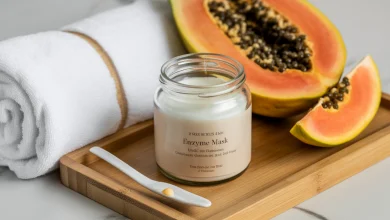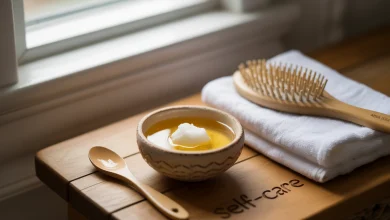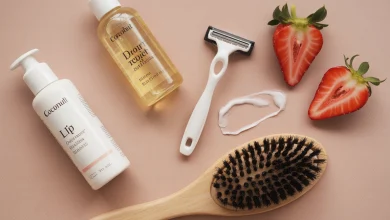Korean Skincare: The Ultimate Routine That Actually Works
Do you know that the use of Korean skincare is one of the most crucial trends uprising in beauty around the world in 2025? Having more than doubled sales since last year, K-beauty has gone from being an interest in a niche to a global trend.
With the innumerable number of serums, essences, and steps, the entire idea of Korean skincare can become maddening. People want to have clear skin, but it is so to find something that really works among so many choices and contradicting pieces of advice. Is a 10-step routine really necessary? Which ingredients actually work?
In this guide, you will learn everything about the Korean skincare, from a 10-step standard basic routine to new product innovations in 2025. If you are a consumer new to k beauty, or already want to improve your routine, this article was written for you, with concise, practical recommendations based on the latest findings and trends.
Perfect for skincare beginners, new and future Korean skincare enthusiasts, or anyone building a personalized, results-driven 2025 Korean skincare routine, this article is absolutely for you.
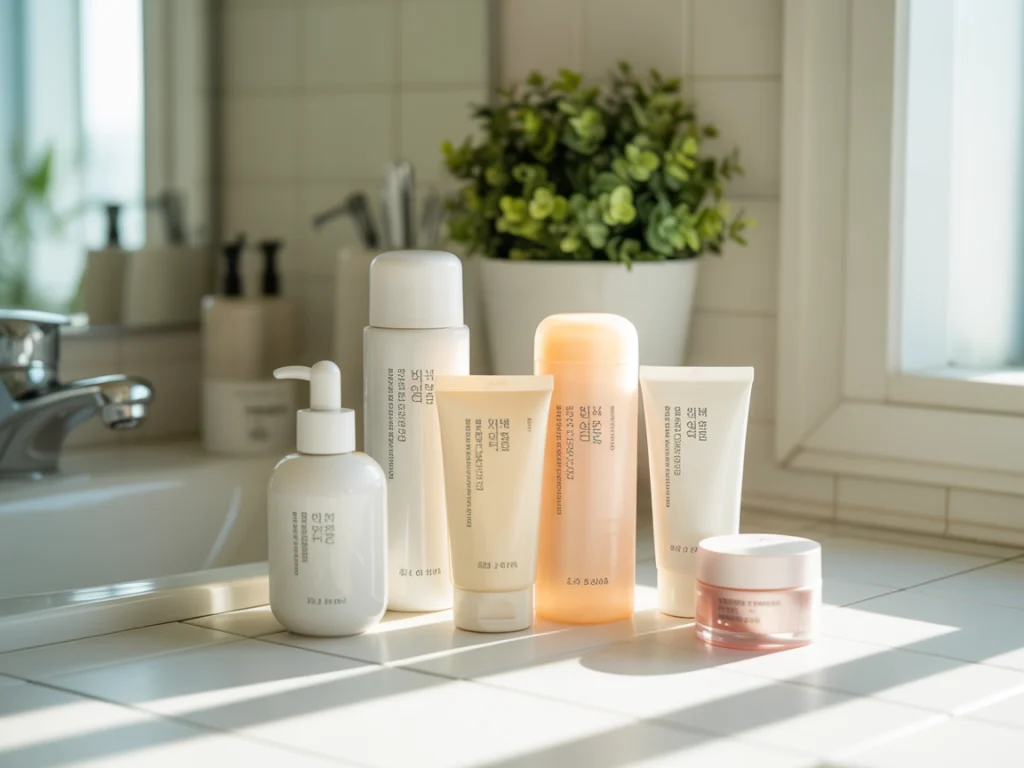
Why Korean skincare is a global phenomenon in 2025.
Korean skincare did not become popular on the international appeal until around 2014 when enthusiasts of beauty picked up on the innovative formulations and painstaking care for skin health pouring out of Seoul. What started as a curiosity has grown into a beauty revolution which shapes the world of skincare to date.
The Korean skincare market sizes to $24.3 billion in 2025, with a CAGR of 9.8% over the next five years. This incredible growth outshines the traditional beauty markets of Europe and North America and goes to show how timeless the K-beauty philosophies are.
What makes people still rely on Korean skincare than the rest? The answer to this lies in three main components that make K-beauty something different, three differentiators. relentless innovation, strategic layering, and emphasis on natural ingredients. Korean brands will generally get products from development all the way to market in only 4-6 months (10-14 in the West), then put state-of-the-art ingredients such as fermented extracts and proprietary APC Complex® [Advanced Peptide Complex®] into those formulations much sooner than Western brands, as this fermented.
Have you seen how many Korean products have that luxurious feel while not so luxurious in price? This easy pricing strategy has played a critical role in ensuring K-beauty still continues to hold a majority of the international market.
The Major Principles of the Korean Skincare Philosophy.
The Korean skincare philosophy isn’t really about the products, but rather about a holistic approach built around four fundamental principles which make it stand out from Western beauty traditions.
First and foremost is prevention. Instead of providing skincare when skin is affected, the Korean skincare focuses on preventing damage prior to its development. This action plan provides the reasoning for the focus on everyday sun protection and early anti-aging care that can start even in adolescent years.
Second is the focus on intense hydration. Korean beauty experts understand that moisturized skin is stronger, looks fuller and holds its youth. This is why there are the several hydrating layers in an average Korean regimen.
Third is the strategic layering technique. By using products from thinnest to thickest consistency, each formula has the ability to penetrate properly and deposit maximum benefits without interference.
Finally, Korean skincare embraces personalization and mindfulness. The ceremony of skincare ritual is taken with equal importance to the products themselves making the daily routine into a way of self respect and attention not a task.
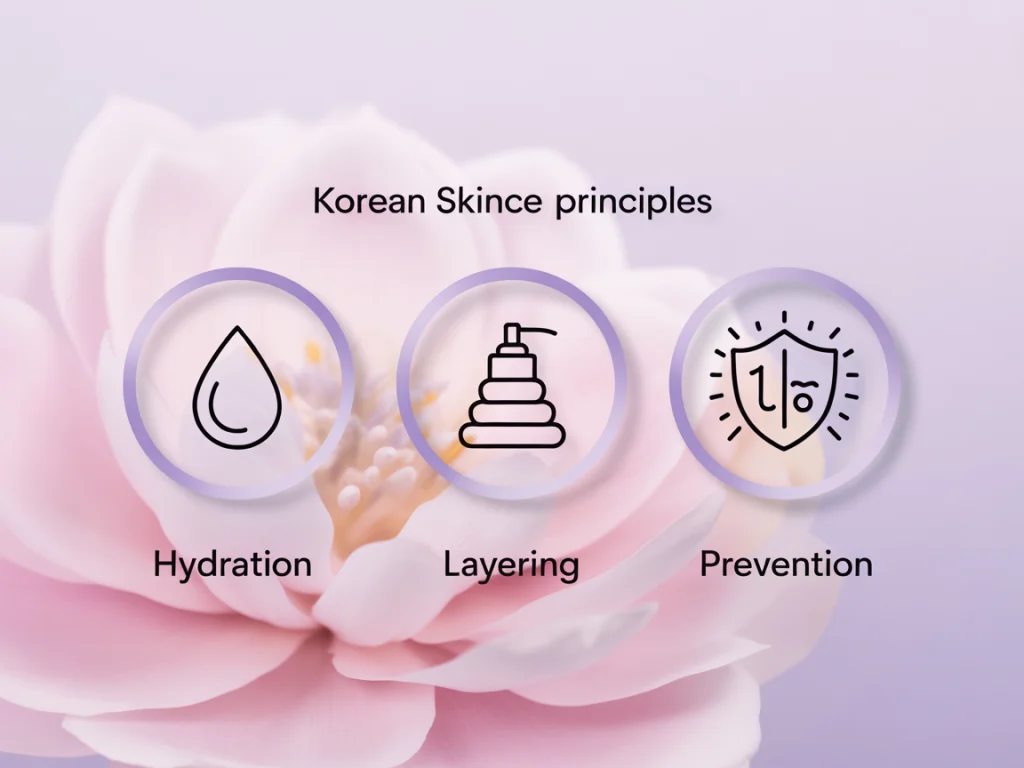
2025 Update: Step by Step Breakdown of the Korean Skincare Routine.
The popular 10 steps of Korean skincare routine have also changed in 2025, but this time, more towards individual customization and effectiveness of each of the steps instead of rigid adherence to them all. Here’s your updated guide to each component:
Step 1 – Oil Cleanser
An oil-based cleanser is the first part of double cleansing which serves to break down oil-based impurities such as makeup, sunscreen, as well as sebum. 2017 formulas include Enzyme infused cleansing oils that start breaking down dead skin cells during the first clean. All of these will be updated in 2025
Step 2 – Water-Based Cleanser
After the oil cleanser, a mild water-based cleanser they are to remove any remaining impurities without destroying the skin barrier. The latest water cleansing formulas contain prebiotic elements that boost your microbiome with the cleansing.
Step 3 – Exfoliator (2 – 3 times weekly).
Light exfoliation that exfoliates dead skin to bring out brighter skin underneath. The trend of 2025 is moving from the brutal cleansing with the hard physical scrubs to the soft enzymatic or PHA-based chemical peels that wash away dead without irritation.
Step 4 – Toner
Korean toners today are quite different from the astringent alcohol toners of times past. Today’s versions address balancing of the skin pH, providing the first layer of hydration, and preparing skin in order to absorb further products better.
Step 5 – Essence
The essence is the heart of the Korean skincare and it’s a lightweight essence with a high amount of actives in it. The latest essences contain fermented products and peptide complexes: they increase cell turnover and strengthen the protective functions of the skin.)
Step 6 – Serum / Ampoule
These intense treatments work with strong active ingredients on specific skin complaints. Development of multi-functional serums which aim to deal with multiple problems at once has soared in 2025, eliminating the necessity of layering up several products.
Step 7 – (optional) sheet mask 2–3x per week
Sheet masks provide an intense nourishment and moisture. The newest innovation is biodegradable masks containing stabilized vitamin C and hyaluronic acid complexes for the purpose of increased effectiveness.
Step 8 – Eye Cream
The delicate eye area benefits from specialized care. New eye creams use peptide technology and are packed with light-reflecting particles which diminish dark circles, puffiness, and fine lines at once.
Step 9 – Moisturizer
This step caps all prior layers and gives more nutrients. Modern formulation centers on repair of the barrier with ceramides and fatty acids and keeping a light weight feel.
Step 10 – Sunscreen (AM only)
The last morning step and presumably the most important one for prevention. The latest Korean sunscreens provide SPF 50+for invisible finishes with extra skincare such as pollution protection and blue light defense.
Quick 10-Step Korean Skincare Checklist:
- Oil cleanse to remove makeup and sunscreen
- Water-based cleanse for remaining impurities
- Exfoliate 2-3 times weekly for cell turnover
- Tone to balance pH and begin hydration
- Apply essence for active ingredient delivery
- Target concerns with serums/ampoules
- Boost with sheet masks 2-3 times weekly
- Protect eye area with specialized cream
- Seal with moisturizer appropriate for skin type
- Finish morning routine with broad-spectrum SPF
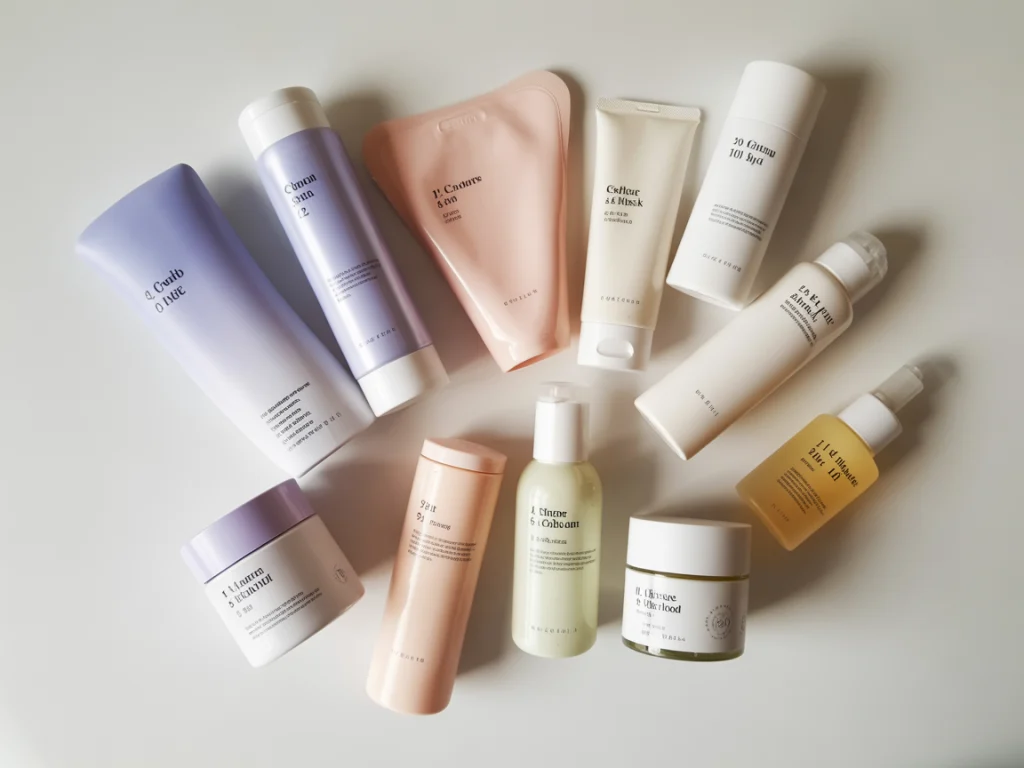
New Trends in Korean Skincare for 2025.
Fermented Ingredients & Barrier Repair
The largest trend in Korean skincare this year is fermented ingredients that are said to mimic the skin’s own microbiome. These formulations enhance skin barrier function and have an anti-inflammatory effect. Sales of products that have kombucha, fermented rice water, and galactomyces have increased by 78% from the last year.
Skin Minimalism (Skip-care Method)
10-step routine popularised K-beauty, but 2025 has brought “skip-care” – a minimalist philosophy with an emphasis on effective products instead of many. This approach addresses consumer need for a hassle free experience without compromising results.
-
- Fewer products, more targeted use
- Multipurpose serums with multiple active ingredients
Hydrating toners that have exfoliating and brightening abilities already present
Smart Skincare Tools & Apps
Technology integration has literally taken Korean skincare to new levels, where there are AI-operated tools that can help analyze your skin’s condition and suggest products that are best suited for you. Handheld water level-testers, pH balancers and barrier function testers give you real-time feedback on the state of your skin and apps accompany them and let you track progress and make adjustments to your routine.
Sustainable Packaging & Refillable Systems
Environmental awareness has emerged as one of the dominant values in Korean beauty institution. Major brands have launched refillable packaging systems that leave less than 30% waste. Biodegradable sheet masks, cardboard tubes for stick products, and concentrates requiring less water are all the symbols of such sustainability commitment.
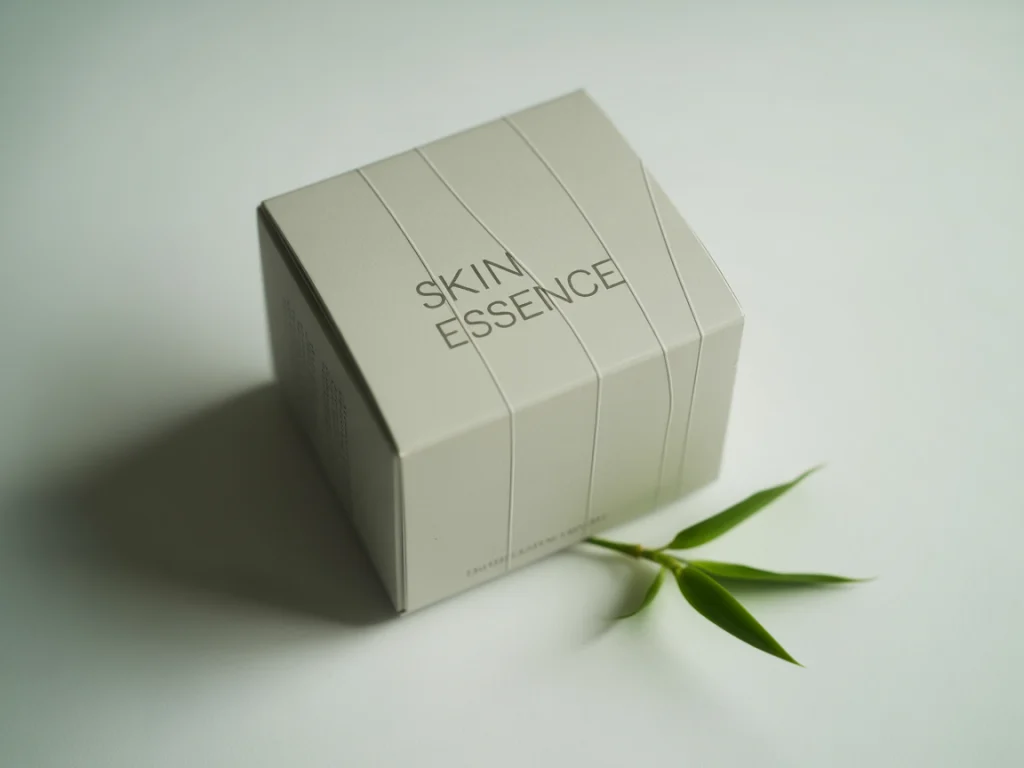
How to pick the perfect Korean skincare products for your skin type.
Knowing exactly what products to choose, depending on your skin type, is essential to getting the best out of Korean skincare. The emphasis on customization means there’s no one-size-fits-all approach.
Dry Skin → Focus on Moisture Retention
If you are dry skinned, focus on products which contain humectants such as hyaluronic acid and glycerin which draw moisture into the skin. Seek oil-based cleansers that will not remove oils naturally from your skin, and cream-based moisturizers with ceramides, and night masks to provide an intense hydration supply while you sleep.
Greasy Skin ⇄ Lighter, Balancing Ingredients
For oily skin types, wear water-based non-comedogenic products that don’t block pores. Different products containing niacinamide aid in the regulation of sebum production but tea tree and salicylic acid gently exfoliate so as not enough to cause breakouts. Opt for gel moisturizers instead of heavy creams.
Sensitive Skin – calming/fragrance-free products
Sensitive skin plays well with sensitive formulations with few ingredients. This brand has Centella Asiatica (also known as Cica or tiger grass) which helps reduce inflammation, and madecassoside which helps healing. Avoid products containing Alcohols, artificial fragrances and pure essential oil that can cause irritations.
Combination Skin → Dual-Zone Approach
For combination skin try to use different products in various face parts. Use lightweight gel formulations on T-zone, and use richer creams on drier parts. Products, including green tea, panthenol, work well because they balance oil production and are hydrating enough.
- Rich creams, oil essences, sleeping masks].
- Gel formulas, light toners, clay masks.
- Fragrance free creams, cica balms, mild face wash.
| Recommended Ingredients | Product Types |
|---|---|
| Hyaluronic acid, ceramides, squalane | |
| Niacinamide, tea tree, BHA | |
| Centella Asiatica, madecassoside, allantoin | |
| Green tea, panthenol, AHA/BHA | Zone-targeting serums, balancing toners |
Most Popular Korean Skincare Brands in 2025.
The face of popular Korean brands keeps changing with some existing big players staying afloat while new players take over the market through creative ways.
COSRX continues to be a favorite because it is a brand that formulates with minimal fillers and fragrances in mind, concentrating on those active ingredients. Their Advanced Snail 96 Mucin Power Essence remains a best seller for barrier and hydration repair.
Truly, the Beauty of Joseon has achieved immense popularity because it uses modern skincare technology while mixing the Korean herbal ingredients in it. Their Glow Serum, teaming propolis with niacinamide, has become a worldwide phenomenon for bringing people “glass skin”.
Innisfree sustains its brand image as an eco-friendly corporate entity with an even greater focus on sustainability via the refill station programs as well as packaging which is built to dissolve.
Laneige remains ruler of the hydration space, with its line Water Bank reformulated with probiotics and improved moisturizing abilities.
The Round Lab has been becoming a dermatologist recommended brand of choice due to its gentle, yet effective formulations that are suitable for sensitive and reactive skin types.
Torriden has become the brand of 2025, coming to light due to research-driven compositions of proprietary DIVE-IN Technology – the ingredient targeted delivery to deeper layers of the skin.
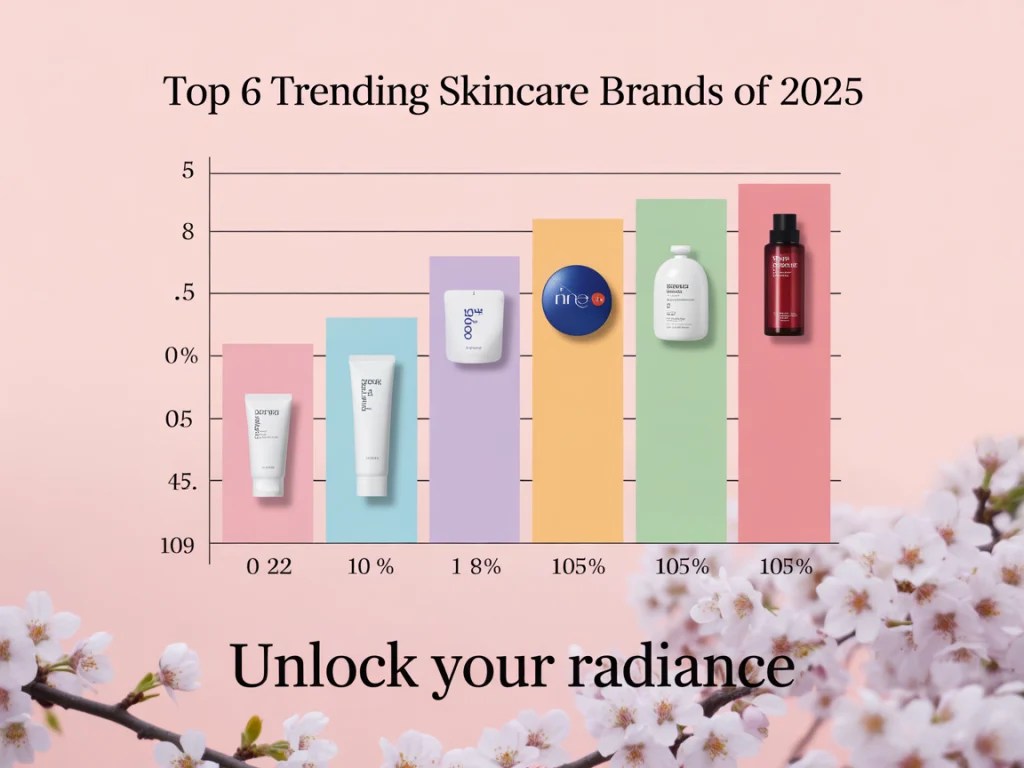
Most Common Mistakes in Korean Skincare (And How to Avoid Them)
Over-layering Too Many Actives
The commonest blunder is mixing too many active ingredients in a single routine. Combining different products that contain AHAs, BHAs, retinol and vitamin C can damage your skin barrier and lead to irritation. Instead, you use potent actives on alternating days or spread them out during morning and evening routines.
Ignoring Sunscreen
Although being the most essential anti-aging step, most people seldom use daily sunscreen application. Even the most expensive serums and procedures for skin repairing cannot compare with what harm UV brings. Today’s Korean sunscreens are lightweight and comfortable- No more excuses for omitting this essential step.
Skipping Patch Tests
Eagerness to try new things will often make people forget to patch test, where they are likely to end up with allergy or breakout. New products should always be tested on a small area near your jaw at least for 24 hours prior to applying anywhere on your face, particularly with products made with new or trending components.
Using the Same Routine Year-Round
Your skin needs vary with seasons, hormonal variations and age. The regime that performs miracles on humid summers can turn your skin to a living desert in winter. Notice how your skin feels and adapt the routine depending; adding more hydration when needed, or cutting down on heavy layers if skin feels congested.
Do you commit any of the skincare sins to your skin? It’s cool – awareness is the first step to developing an efficient routine.
Latest News and New Developments in Korean Skincare (2025).
The frantic drive for innovative products characterises the Korean skincare in 2025, not forgetting several visionary projects redefining the way we take care of skin.
AI-based tools for skin analysis have turned out to be impressively advanced, with apps capable of skin disease diagnosis that achieves 93% accuracy to those of dermatologists. These tools develop personalized routines for skincare that change depending on the moment to moment change in your skin condition, environmental factors and even the stress levels.
Lab-created actives which perfectly mimic the skin’s natural compounds — biotech-infused serums — define the state of the art in ingredient technology. These synthetic biologics are unrivaled for efficacy but without the sustainability issues of some natural extracts, keeping potential irritation and allergic reaction to a minimum.
Microbiome-friendly skincare is an approach that is still gaining steam, and quite rightly so, as brands have begun to recognize that active skin care is one that soothes and nurtures, rather than strips away, your one of a kind bacterial ecosystem. Prebiotic, probiotic, and postbiotic formulations support healthy diversity of skin flora, which research now validates, is a keystone in barrier function, immune response and skin health in general.
Male Korean skincare products have blown up tremendously including lines aimed to take care of issues such as thicker skin, overactive sebum production, shaving method-related action. The male skincare market in Korea has increased 57% in just the past year, signifying the change in attitudes around the world on men grooming.
Conclusion: What You Need to Remember
Having discovered the world of Korean skincare, here is what you need to know in 2025 to embark on your path.
-
- Korean Skincare philosophy emphasizes soft, layered care that avoids skincare issues at the source
- Traditional 10 step routine can be adapted and simplified, according to your purposes and fears
Sunscreen is the non-negotiable one in every skincare regime.
Trends for 2025 focus on preservationist, smart, minimalist ways to skin health.
The best results are when you choose products depending on your particular skin type.
Which Korean skincare step transformed your routine? Share your favorite tip in the comments! And if you found this guide helpful, use the social buttons below to help a friend to get their best skin too.
Social share buttons: Share this guide on Facebook, X (Twitter), or Telegram in order to make a friend glow too!

